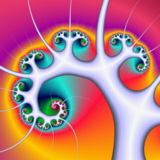Mozart effect II
 The “Mozart effect” is now firmly ensconced as a mass culture meme. But what is the precise mechanism at work?
The “Mozart effect” is now firmly ensconced as a mass culture meme. But what is the precise mechanism at work?
Rauscher and Shaw[1] believe that listening to music helps ‘organize’ the inherent cortical firing patterns, serves as an ‘exercise’ for exciting and priming the patterns and their sequential flow, and enhances the ‘symmetry operations’ among them.
The “inherent patterns” here refer to the built-in spatial-temporal firing patterns of the “trions”, Shaw’s idealized cortical mini-columns which, according to his theory, form the common neural language of the cortex.
Interestingly, the researchers then propose extending the scope of the experiments to chess. They muse that listening to Mozart should produce short-term enhancement of analytic chess exercises, while “somewhat different” music would be necessary to enhance performance of creative exercises. In our own research, of course, we would substitute Go for chess.
Previous post on neuromusicology .
[1] Rauscher, Frances H., Shaw, Gordon L., Ky, Katherine N. Listening to Mozart enhances spatial-temporal reasoning: towards a neurophysicological basis, Neuroscience Letters 185 (1995) pp. 44-47.

June 5th, 2005 at 00:54
It’s mentioned (and slightly sceptically) in this week’s New Scientist. Coincidence?
http://www.newscientist.com/channel/health/mg18625011.900
November 27th, 2009 at 16:14
[…] Mozart effect II, Religious music in your […]